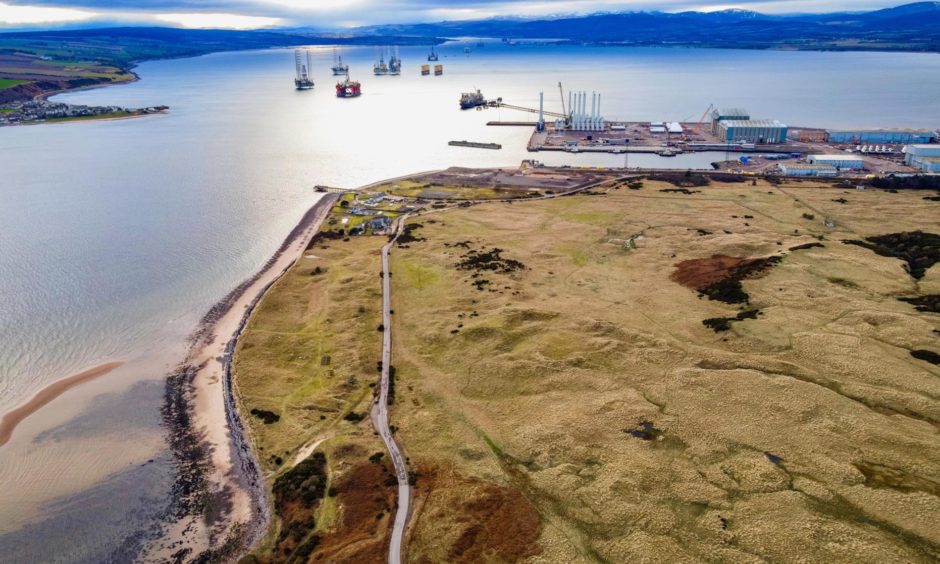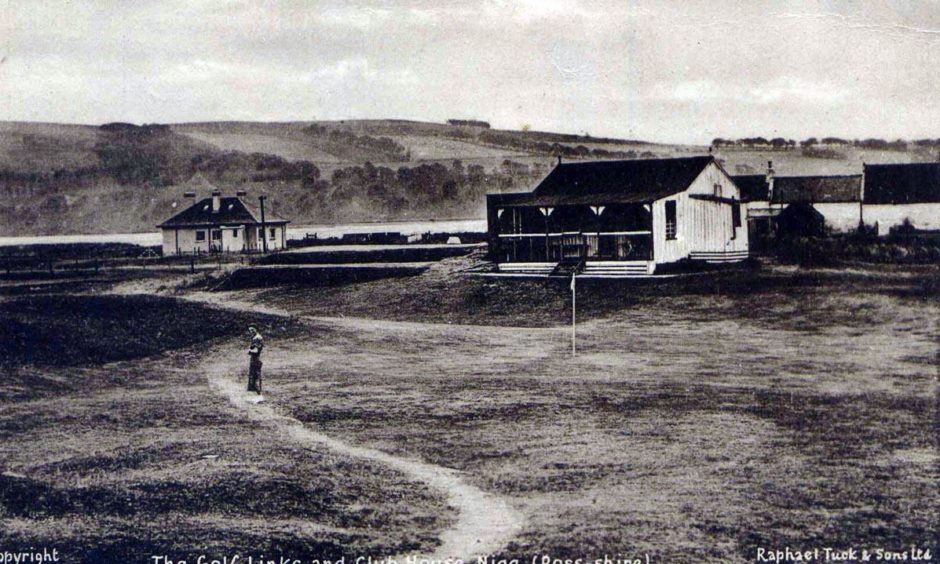Ambitious plans are being developed to create a world class golf course on the site of a once-renowned – but now almost forgotten – historic course.
Robert Mackenzie wants to build the attraction on 300 acres of land at Pitcalzean Mains farm, at Nigg in Easter Ross, which he bought in 2019.
The privately-funded links would partly restore a course built in 1890 that was once used by visiting members of the Home Fleet to Invergordon.
The course, thought by some to be the finest natural course in the world, was largely closed in the 1940s but some remaining holes continued to be played until the 1960s.
Mr Mackenzie, who has commissioned a leading course architect for the project, will this week submit a request to Highland Council for an environmental impact assessment screening and scoping opinion ahead of public consultation.
If the plans are favourably received, he wants to submit a formal application by the summer, with the aim of starting work by winter and welcoming the first golfers by April 2023.
He envisages the course working successfully alongside nearby industrial operations at Nigg, while complementing other internationally-acclaimed courses at Royal Dornoch and Castle Stuart to help attract more golfing visitors to the Highlands.
As well as the 18-hole course, Mr Mackenzie wants to develop intermediate and short nine-hole courses, driving range, practice area, clubhouse with restaurant and bar and accommodation.
He said: “People I’ve spoken to suggest there is a need for one or more top end courses in the area to help develop it more as a golfing destination.
“I love history and the fact that I could potentially build a golf course that already has 130 years of history is exciting.”
He said the, as yet unnamed, designer is a leading architect with several courses in the world Top 100: “He believes the site is of good enough quality to be considered in that ranking.”
Mr Mackenzie said the site has no major environmental designations, which have hampered efforts to develop other courses, such as Coul Links in Sutherland. However, much of the land is currently designated for industrial use.
But he believes there is an opportunity to enhance the landscape and grow sustainable tourism, alongside the industrial port and possible expansion of the Nigg Energy Park, to help diversify the economy post-Covid.
“I was born and bred in Nigg and the Nigg yard has been an important part of the economy. But over the years we’ve lost a hotel, school, shop and church and I think this is a way of regenerating the area while still allowing the yard to expand.
“There is definitely room to realise other aspirations alongside industry. Anything I do is going to improve the site, while improving biodiversity, the core path network and beach access and will have a positive impact for the whole community.”
According to the Forgotten Golfing Greens of Scotland website, the course at Nigg, also called Castlecraig Golf Club, was laid out in 1891 and was extended to 19 holes around 1908.
The visits of the Home Fleet every spring and autumn led it to be open for Sunday play.
Golf historian Harry Ward said several unsuccessful attempts were made at resuscitating the club and course.
He said: “Much of the ground used for the original layout is still intact and commands stunning views over the firth which, at one time, would have been the scene of many of the great ships of the fleet. Today however, it is somewhat marred with the disappointing sight of a more modern array of defunct objects, oil platforms.”
Plans to revive plans for a major golf course at Coul Links in Sutherland have been backed by other clubs in the area.


